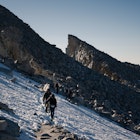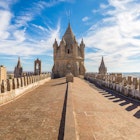
Oct 30, 2025 • 8 min read
You don’t need to book an expensive cruise to discover the beauty of the Galápagos. Use these top tips to travel independently and stretch your budget.

Oct 30, 2025 • 8 min read
You don’t need to book an expensive cruise to discover the beauty of the Galápagos. Use these top tips to travel independently and stretch your budget.

Oct 30, 2025 • 8 min read
Discover the regional capital at the edge of the Amazon, where mighty rivers meet the world’s most unlikely opera house. Here’s all you can do in Manaus.

Oct 30, 2025 • 6 min read
Wander through a festive European-style market in the US. Here are the best.

Oct 30, 2025 • 6 min read
El Salvador is Central America’s smallest country, but there's plenty to see and do. Explore more easily with this guide to getting around in El Salvador.

Oct 30, 2025 • 8 min read
Stick around in Nadi, the arrival point for most visitors to Fiji, for these top experiences.

Oct 30, 2025 • 5 min read
San José is filled with world-class museums, creative cuisine and avant-garde art. Get to know “Chepe” with this guide.

Oct 30, 2025 • 6 min read
Plan your trip to Thailand’s northern city of Chiang Mai with these tips on safety and etiquette.

Oct 29, 2025 • 5 min read
Kaleidoscopic tropical fish, spectacular coral reefs and year-round warm waters make the Caribbean one of the best places for snorkeling.

Oct 29, 2025 • 5 min read
A shining cultural symbol of Argentina, the musical style and dance of tango was born in (and remains alive and well) in Buenos Aires.

Oct 29, 2025 • 7 min read
There’s nothing quite like the restorative high from a dip in a proper thermal pool. Add to this year's travel roster these incredible European hot springs.

Oct 29, 2025 • 9 min read
From getting to the Mamanucas to exploring the rugged landscape of Viti Levu, here are the best day trips.

Oct 28, 2025 • 5 min read
Come winter, Utah delivers epic snow. Excellent for skiers and riders of all levels, these resorts offer a great day on the hill with unbeatable amenities.

Oct 28, 2025 • 6 min read
Our writer shares his tips for fraternizing with the locals while eating food that tastes like your nonna made it.

Oct 28, 2025 • 8 min read
Plan your Mt Whitney hike with this guide to route options, trail conditions, permits and gear.

Oct 28, 2025 • 7 min read
There’s much more to Den Haag (The Hague) than meets the eye.

Oct 28, 2025 • 8 min read
Auckland is a big little city of natural beauty and cultural diversity – catch all its waterfront views, fusion dining and top sights.

Oct 28, 2025 • 6 min read
Experience the best of Fiji's landscapes with these top hiking routes.

Oct 28, 2025 • 6 min read
Plan a magical trip to Portugal with our top tips on transport, safety and etiquette.

Oct 28, 2025 • 7 min read
These cities promise an unforgettable New Year's Eve experience on December 31 and into January 1.

Oct 28, 2025 • 3 min read
Lonely Planet caught up with Gronk to talk about his recent RV escapades, his favorite travel snacks and a once-in-a-lifetime trip he still dreams about.

Oct 28, 2025 • 10 min read
Whether you want to explore in Alta Badia or check out volcanic views at Mt Etna, Italy offers top spots for skiers and snowboarders.

Oct 27, 2025 • 13 min read
These unique properties aren’t just cool places to lie your head after a big day of driving – they make the journey even more memorable.